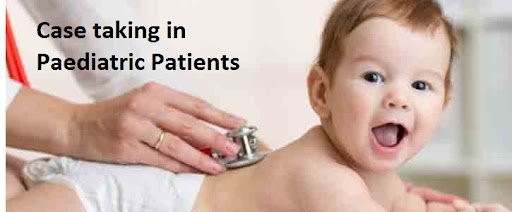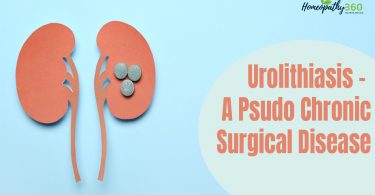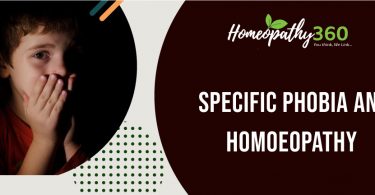
ABSTRACT:
Case taking in paediatric patients are supposed to be very difficult and challenging, by most of the physician. Paediatric case taking in is not just a process but it’s a skill, an art which needs to be developed over the period of time by practice, by studying different approaches, stalwart’s case studies and research papers, articles, etc. Because it requires patience, skillful questioning, proper observation and interpretation of acts and behavior of the child. In case of infants and neonates, it becomes more challenging. One has to depend on observation, expressions and history given by mother.
To avoid many obstacles of the case taking which may spoil the case, proper case taking is essential because it’s said that “a case well taken is half cured” and to be an expert in paediatric case taking must study different approaches of case taking.
KEYWORDS: paediatric case taking, different approaches.
INTRODUCTION:
Case taking is the process of collecting all the facts about the patient, using various tools like observation, perception, history-taking – given by the patient, attendant, clinical examination, etc. in order to find a remedy for the patient – using one’s knowledge of homoeopathic materia medica, organon of medicine, and repertory.
According to Close, “the purpose of homoeopathic examination is to bring out the symptoms of the patient in such a way as to permit their comparison with the symptoms of the materia medica for the purpose of selecting the similar or homoeopathic remedy.”1 Collection of all the facts pertaining to the patient, which may help in reaching to the totality of the patient and thereby help in finding the correct simillimum. It is also said that ‘a case well taken is a case half cured’.
Case taking in paediatric patients are supposed to be very difficult and challenging, by most of the physicians. As in paediatric case taking, no one is sure about how child will response to our questions? From where shall we to start? And how we need to proceed? What needs to be asked and what not? Which symptom is important and which is not? Mind is just full of questions. But instead of getting confused, one should take it as an opportunity to explore one’s knowledge, and for this purpose, one needs to study case taking in detail, by different authors and different approaches of case taking.
Different approaches of case taking:
According to Dr Pravin Jain2,it is most important to observe and interact with children and not simply engage with the parent in ‘rubric hunting’. He has also analysed his paediatric cases in a very practical and straightforward way using what is actually observed in the child’s behaviour.
- He has developed SEA- axis (sociability, energy and anger) for observation and interaction with child which are considered critically important factors.
- Thermals and thirst are reliable generals.
- Constitution and characters are considered as important differentiators.
- Affinity and location are used for ruling out.
- Steps
of this approach are as follows:
- Determine sociability of child: is the child approaching or withdrawing?
- Determine the energy level of child: is the child energetic and restless or lacking energy?
- Determine anger and find the frustration whether destructive or not?
- Find the thermal relations by thirst, covering, clothing, fanning etc. these are very reliable general modalities
- Find out the constitution and character of child such as happy, joyful, bashful, timid, obedient, bully, rude, confident, complaining, moaning etc.
Dr Robin Murphy3 also have given some tips for the paediatric case taking which are as follows:
- OBSERVATION:
- Eyes: softness, sharpness, fear, hysterical, delicate, evil, irritable, dissatisfied, pain.
- Bodies: restless, hyper, slow, timid, aggressive, outgoing, obedient or disobedient, how sensitive? Shy? Clumsy? Coordinated?
- DIFFERENTIATION:
- First aid, acute or chronic case or problem
- GENERALS:
- Diet, sleep, weather, emotional and mental state etc.
- BEHAVIORAL ANALYSIS:
- Playing alone or with others
- Playing with toys or animals
- Competitive or aggressive
- reaction to physical pain
- dependent or independent
- Pattern of food, sleep, play etc.
- DEVELOPMENTAL HISTORY:
- Musculoskeletal development, comprehension, learning to walk and talk
- How was pregnancy?
- Family history
- MENTAL AND EMOTIONAL STATE :
- Sensitivity to external impressions
- Reaction to consolation
- Sensitivity to others pain like parent’s fights, movies, sad stories etc.
- Family dynamics which includes overall environment of family.
- FAMILY ECONOMICS:
- Diet and nutrition
- Education
- Available resources.
- STORY ABOUT THE CHILD:
- Reactions to incidents in family.
- Mothers description about pregnancy and delivery
- Health and family history.
- OBJECTIVE SYMPTOMS :
- Facial expressions, breath, sweating, moles, skin, tongue and reactions to various stimuli etc.
- FEAR:
- Fear of monster, ghost, animals, dark, death, evil etc.
- SLEEP:
- Position of sleep
- Insomnia
- dreams
- FOOD CRAVINGS AND AVERSIONS:
- Also includes thirst
- TIME MODALITIES FOR SYMPTOM.
The essence of art of examining children is that the child should be contented during the examination. There cannot be any standard or regulated patterns of history taking, as the questioning will change depending on the age group of the patient one is dealing with.
The physician should be well aware about the normal physical, social, emotional and intellectual development. Questions should be asked to understand the moral character, intellectual character, social, and domestic relationships.
Data can be collected in an order of:
- Chief complaints
- History of present illness
- Associated complaints
- Past history of previous illnesses;
- Prenatal history, i.e. mother‘s history during pregnancy
- Birth history
- History after birth
- Feeding history
- Developmental history
- Immunisation history – when? how many times? which?
- Family history
- Social history-living conditions, economic status, mother’s occupation
- Child as a person-physical and mental characteristics, life situation
- Physical constitution
- Thoughts on miasms behind4
International Academy of Advanced Homoeopathy has also prepared a special format for paediatric case taking. Each child has its own imaginary world which only he or she can explain in the way he is actor, director and producer of his life. The inner fantasy world of every child is the gateway for homoeopath to enter the world of child’s realm. Mothers state during pregnancy and conditions at the time of conception are very crucial factors in paediatric case taking. This questionnaire has 7 parts:
- Description of main complaint.
- Past illnesses, vaccinations, family history and developmental history.
- Personal history that covers allergies, addictions, likes and dislikes, etc.
- Factors that affect the child.
- Mental and emotional nature of child. Effect of life situations on child.
- Parts of the body affected.
- Mothers history during pregnancy.5
CONCLUSION:
Paediatric case taking becomes more interesting, if one learns the art and proceeds with all the senses working with full efficiency. The more one practices and studies different approaches, the easier it becomes to take the case.
REFERENCES
- CLOSE S. “The genius of Homoeopathy”, chapter XII.
- WITKO D ; case taking and analysis with children, Miccant homoeopathic software, July 13, 2017, 10:00 am.
- MURPHY R: Homoeopathic case taking for children, notes from Robin Murphy’s seminar on pediatric case taking April 9-10, 1983, published on 22 January 2006.
- BP JAYDEEP: Paediatric Case Taking- Useful Tips, Homoeopathy Recourses by Homoebook .Com, 19/12/2019.
- SANKARAN R: Homoeopathic Case record form (for children between 0 to 12 yrs of age.); the other song, International Academy Of Advanced Homoeopathy, www. theothersong.com.
Author:
Dr Ashwini Shripad Kulkarni
BHMS. MD (Hom) Scholar (Paediatrics), DKMMHMC Aurangabad, Maharashtra





